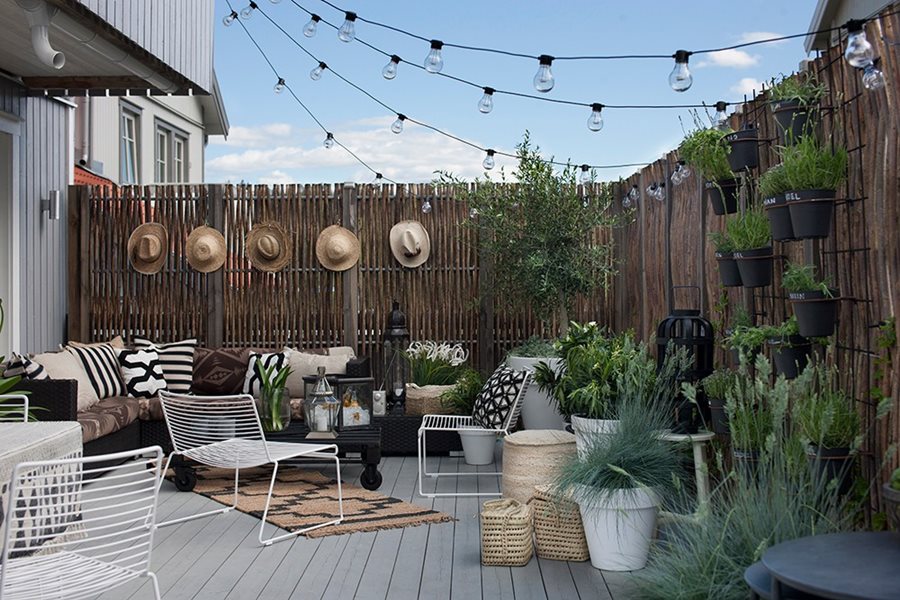Create a Magical Night Garden
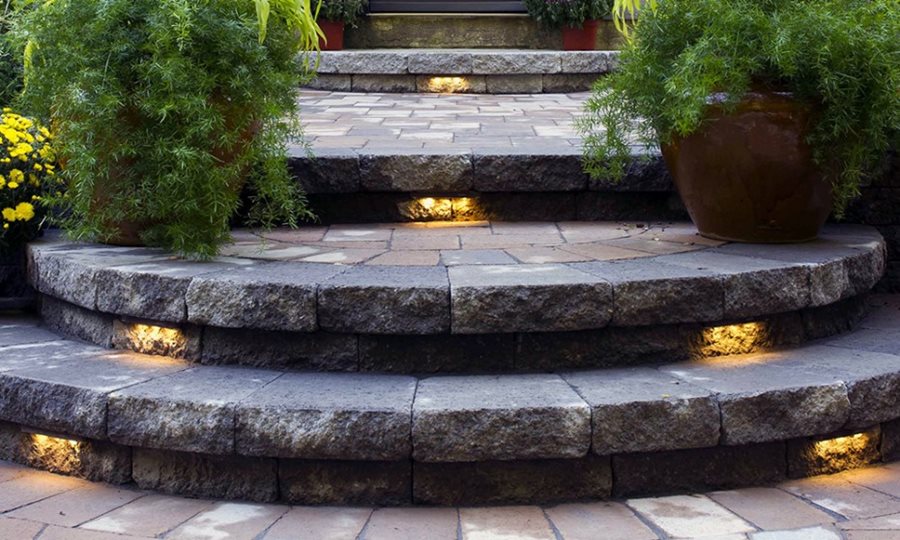
Do you spend a lot of time, effort and money to make your garden beautiful... only to have a pitch black view of it at night?
It does not have to be like that. With a few well positioned lights, you can enjoy your garden well after the sun sets. Garden illumination provides a lovely atmosphere for relaxing and for entertaining in summer. It also enhances security and increases the value of your property.
Types of Garden Lights
You first need to decide whether your garden lights will run on electricity, batteries or solar power. Each of these power sources has its advantages and disadvantages, so careful research is recommended.
The mains powered garden lights are expensive to install, especially if you have to lay wires, but the reward is a reliable and consistent quality of light. Battery powered garden lights are simple to install and easy to move around, but batteries need to be replaced regularly, which creates an ongoing expense. Solar powered lights are as simple and as flexible as the battery powered ones, with the additional advantage of not having to replace the batteries. On the down side, solar lamps can only provide a relatively low light output and require it to be placed in a sunny position. Some solar lamps come with a separate solar panel, which can affect the aesthetics of the display.
Then there are the light bulbs. The choices today are mainly between LED and halogen. Although halogen light bulbs are cheaper, LEDs last much longer and use less energy. In the past, all LED bulbs emitted cold white light, which simply does not look good (especially not in a garden). However, modern LED bulbs come with tints designed to give warmer and more inviting hues.
Whether powered by electricity, batteries or sun, with LED or halogen bulbs, garden lights come in all shapes and sizes. Here are some of the popular types of garden lights:
Spike lights are relatively cheap and easy to use; all you need to do is push them into the ground. Spike lights are most commonly used for illuminating pathways.
In-ground lights are essentially spotlights embedded in the ground, with the face of the fitting flush with the surface. Use them at the edges of driveways and paths or in water features (if they are waterproof). They can also be installed horizontally into the face of steps and walls.
Spotlights provide a beam of light to illuminate a large area. Use them to highlight garden features or as security lighting. Spotlights can be mounted on walls or trees and angled downwards, or placed at ground level, pointing upwards.
Floodlights have a wider beam of light than spotlights. Use them at ground level for highlighting specific landscaping features, for illuminating a large area, and as security lights.
Wall lights can be used to illuminate the entrance of a house or to throw light on to the patio area. Garden wall lights are different from spotlights in that they are decorative light fittings that both provide light to an outdoor area and look good in their own right.
Atmospheric and decorative lights such as lanterns, LED candles, and fairy lights are ideal for parties and celebrations. They can also be used on day-to-day (or night-to-night) basis to create a warm, cosy atmosphere.
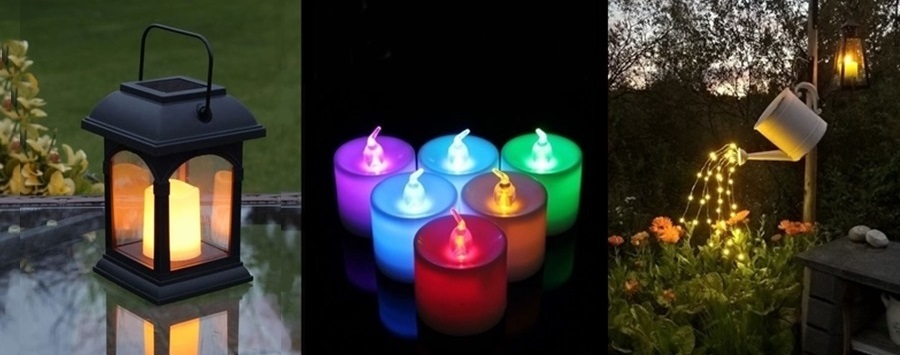
Illumination Techniques
The best way to decide which parts of your garden you want to illuminate is to go out into the pitch black darkness with a powerful torch in one hand and a sketch of your garden in the other. Point the light at various spots, positioning your torch in different ways until you find what works best. Then note on your sketch where you want the light, and how you want it to fall.
Here are some of the garden illumination techniques to experiment with:
Uplighting: Place spotlights low on the ground and point them upwards towards an object to create a focal point at night. Large tree trunks and statues are popular objects to emphasise with uplighting. This technique is very atmospheric and can be used to create a romantic, magic or dramatic effect. In-ground lights can also be used for uplighting.
Moonlighting: The glow of a full moon over your garden creates a magical effect. You can recreate that atmosphere by placing spotlights, aimed down, high up in the canopy of large trees. The light will filter through the leaves and branches, bathing the ground below. Of course, care must be taken not to damage the trees.
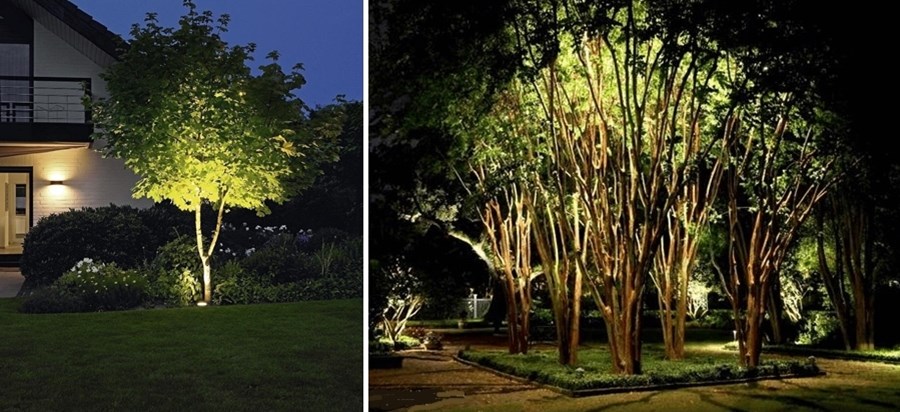
Silhouetting: Create a dramatic silhouette effect by placing spotlights or in-ground lights behind interesting features in your garden, such as a nicely shaped shrub. To create a fascinating play of light and shadow, use several fixtures. Just make sure that the light source itself cannot be seen.
Shadowing: This technique is opposite of silhouetting and involves positioning spotlights, in-ground lights or flood lights between the viewer and the garden feature that happen to be in front of a plain wall, such as a shrub or small statues. The light source should be at a low level, with the light beam pointing upwards. As the light falls on the feature, it casts an attractive shadow on the wall.
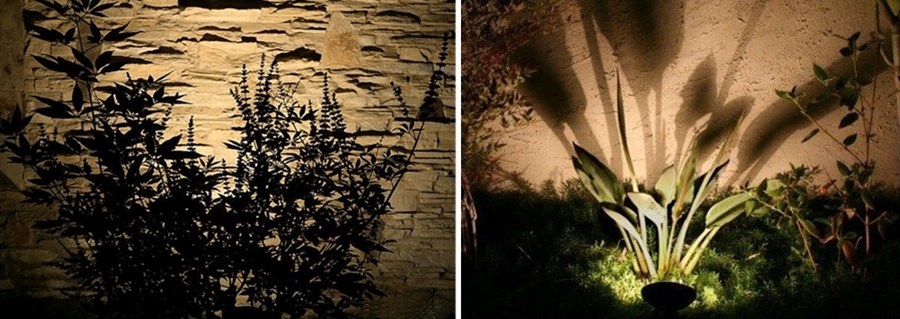
Path lighting: One of the best and the easiest ways to improve the look of your garden at night is to place a few path lights along a pathway or around a garden feature such as a pond or a rock garden. Take care to use the right number of lights and to space them properly. As a rule of thumb, path lights should be placed on both sides of a path in a staggered manner and spaced two to three metres apart, creating pools of light rather than a constant stream.

Whichever type of outdoor lighting you choose and whichever illumination technique you opt for, remember that moderation is the key. All you need are a few well chosen and carefully placed fittings that look good not only at night, but during the day too.
